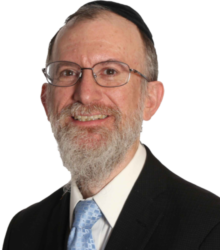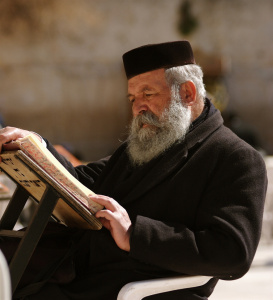When the Rosh Yeshiva of Ner Yisrael, Rav Aharon Feldman shlit”a, called to offer me a review copy of the journal Dialogue, there could only be one answer, of course. But having read it, all I can say is — get it. All the rest is, as they say, commentary [no, no slight intended to the journal by that name]. Each article deserves to be called “required reading” in Jewish thought.
The introductory article is a speech given to Israeli generals by Rav Feldman, explaining in detail the Chareidi worldview, its view on Torah learning, and why the idea of a draft or other mandatory service outside yeshiva poses an existential threat. Then a section of five articles, entitled “A Call to Spiritual Arms,” discusses “the seeming dissonance between the external and internal manifestations of Yiddishkeit in our community and its members’ lives.” Rav Feldman discusses those who are “observant” without being truly religious on the inside, a phenomenon otherwise known as “Orthopraxy,” and how to escape it. Eytan Kobre, perhaps best known for his acerbic wit and dismantling of the heterodox in the pages of Mishpacha, here looks inwards at the trends towards Orthodox conspicuous consumption and otherwise living an easy, “American-style” life. Rav Yaakov Hillel, a teacher of Kabbalah himself, looks at the phenomenon of phony mekubalim and how easily some are duped. Rav J. David Bleich returns to the problem of Orthopraxy vs. Emunah, while Rav Zev Cohen, rounding out this section, discusses the impact of a Mussar Vaad on working bnei Torah.
A shorter, second section covers “sources of Jewish practice.” Have you ever wondered about the origin of the various prayers in the Siddur? Rav Aharon Lopiansky discusses his effort to compile a “Completely Accurate Siddur” and what he discovered along the way, and Rav Zev Kraines explains how Kabbalah finds its way into halachah, in this section.
This would be quite enough a trek over difficult intellectual ground for the average journal, but not for Dialogue. I think the third section, on Science and Torah, will draw the most attention. Dr. Lee Spetner is a well-known critic of the Theory of Evolution, and the writer of Not by Chance, published in 1997. An extended excerpt from his new book, The Limits of Evolution, begins this section.
In the previous issue of Dialogue, Isaac Betech and Obadia Maya discussed “The Identity of the Shafan and Arnevet,” and this leads to another three articles worth an issue in their own right. Rabbi Natan Slifkin writes in to rebut Betech and Maya, and this is followed by articles by Rabbi Dovid Kornreich and Dr. Jonathan Ostroff rebutting Slifkin, providing a reasonably comprehensive picture of this complex debate.
I’m not quite sure why an article on Addictions fits in this section, except that it would fit any of the others even less. Rabbi Yechezkel Spanglet discusses the challenges posed by new addictions to our community — but I will comment that I’m not sure all of them qualify as addictions. When we speak of an addiction, we think of a person unknowingly drawn by chemical and psychological factors into something harmful, be that alcohol, drugs, or incessant surfing of the Internet. Is browsing “missionary propaganda, slander, [or] impugning the honor of Gedolim and Rabbonim” truly in the same category as “unregulated exchange of images,” to which a person might become addicted? I don’t think we can fairly diminish the culpability of those who engage in the former activities by saying they are just “addicted” to destroying other Jews and Kavod HaTorah. Be that as it may, this article, as well, provides much food for thought and discussion.
There are two more sections as well. Rav Feldman’s previous article on “A Torah View on Homosexuality” drew a letter (with his response) as well as to additional articles discussing the extent to which the demands of political correctness have shoved aside scientific fact to elevate “being gay” from a manifestation of the Yetzer Hara to an identity.
Finally, besides an additional letter and response on the issue of dividing those who do and don’t wear Tefillin on Chol HaMoed in a single shul, there are a pair of historical articles — on the destruction of Jewish texts in Hungary, and (in Hebrew) on civil marriages within the Jewish community in Italy and France.
With most journals, you find a few articles that really attract your interest, and skip the rest. I can honestly say that in this case, I would like to finish reading almost every one of these articles in detail. It is truly an exceptional Dialogue.
 Did you ever notice that the first three plagues were not performed by Moshe?
Did you ever notice that the first three plagues were not performed by Moshe?
 “Yissachar is a strong donkey, who rests between the borders. And he saw rest, that it was good, and the land that it was pleasant, but he bent his shoulder to accept [the burden] and became an indentured servant.” [49:14]
“Yissachar is a strong donkey, who rests between the borders. And he saw rest, that it was good, and the land that it was pleasant, but he bent his shoulder to accept [the burden] and became an indentured servant.” [49:14]